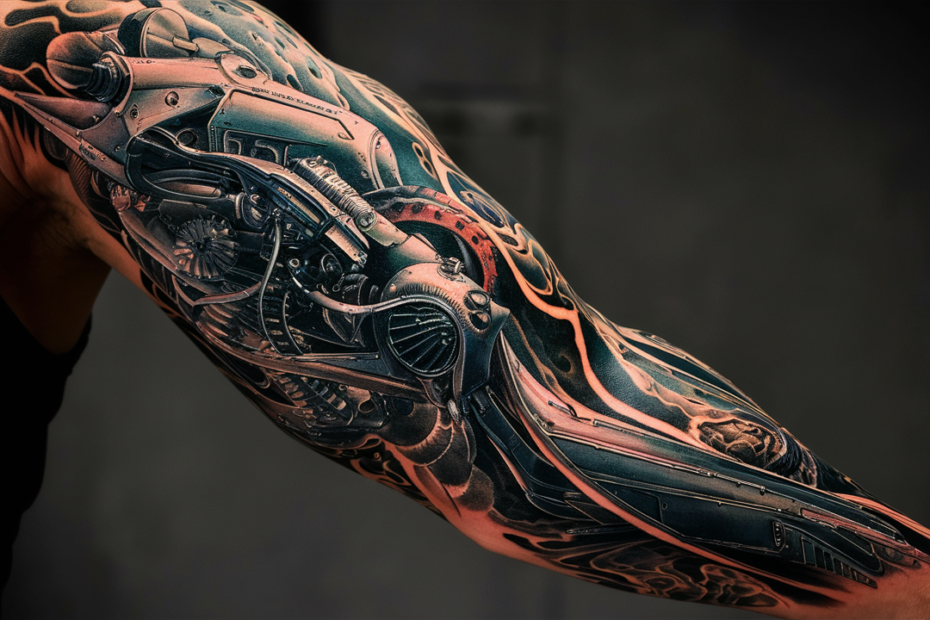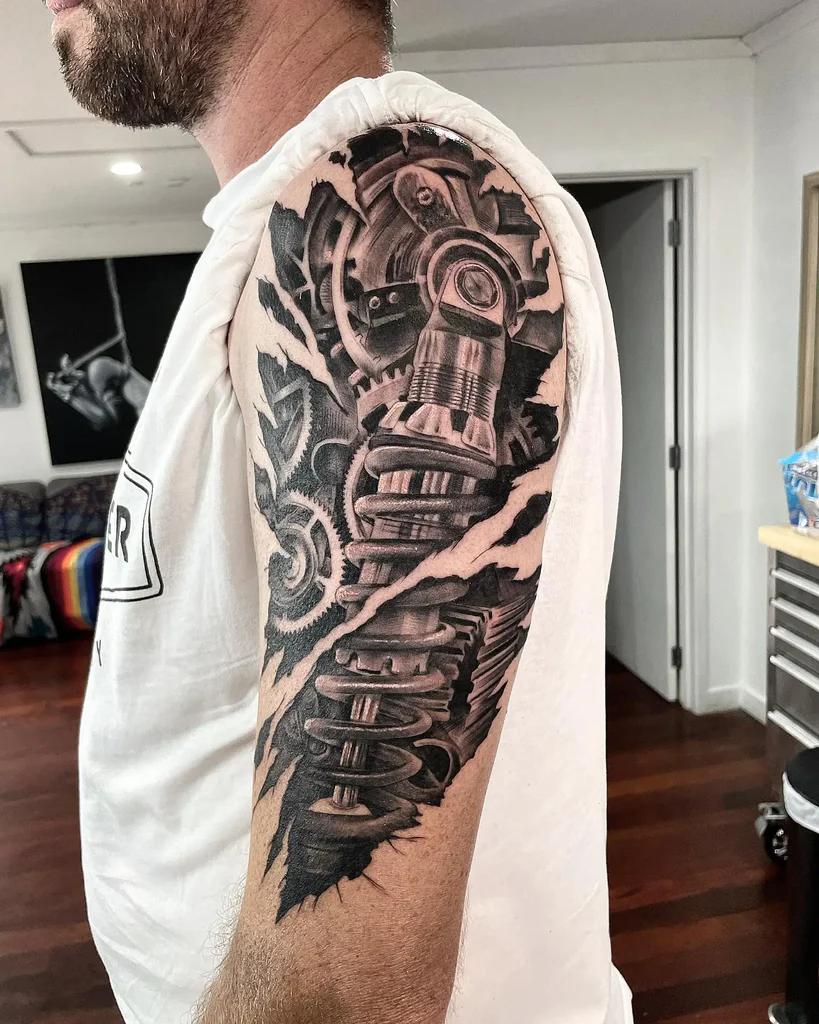

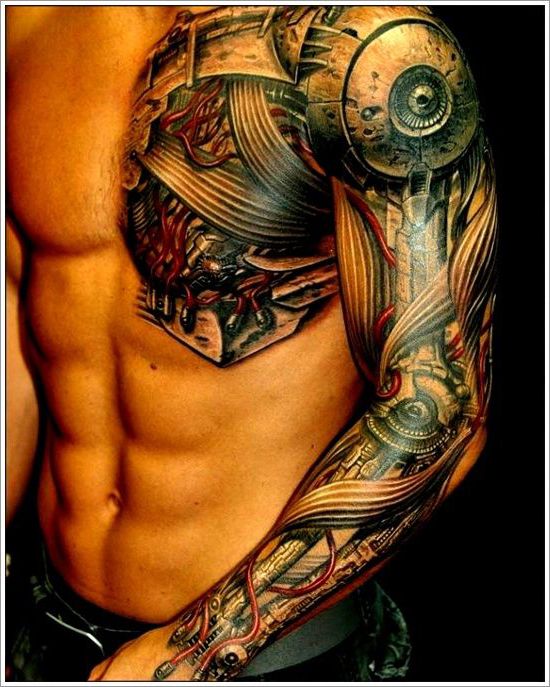

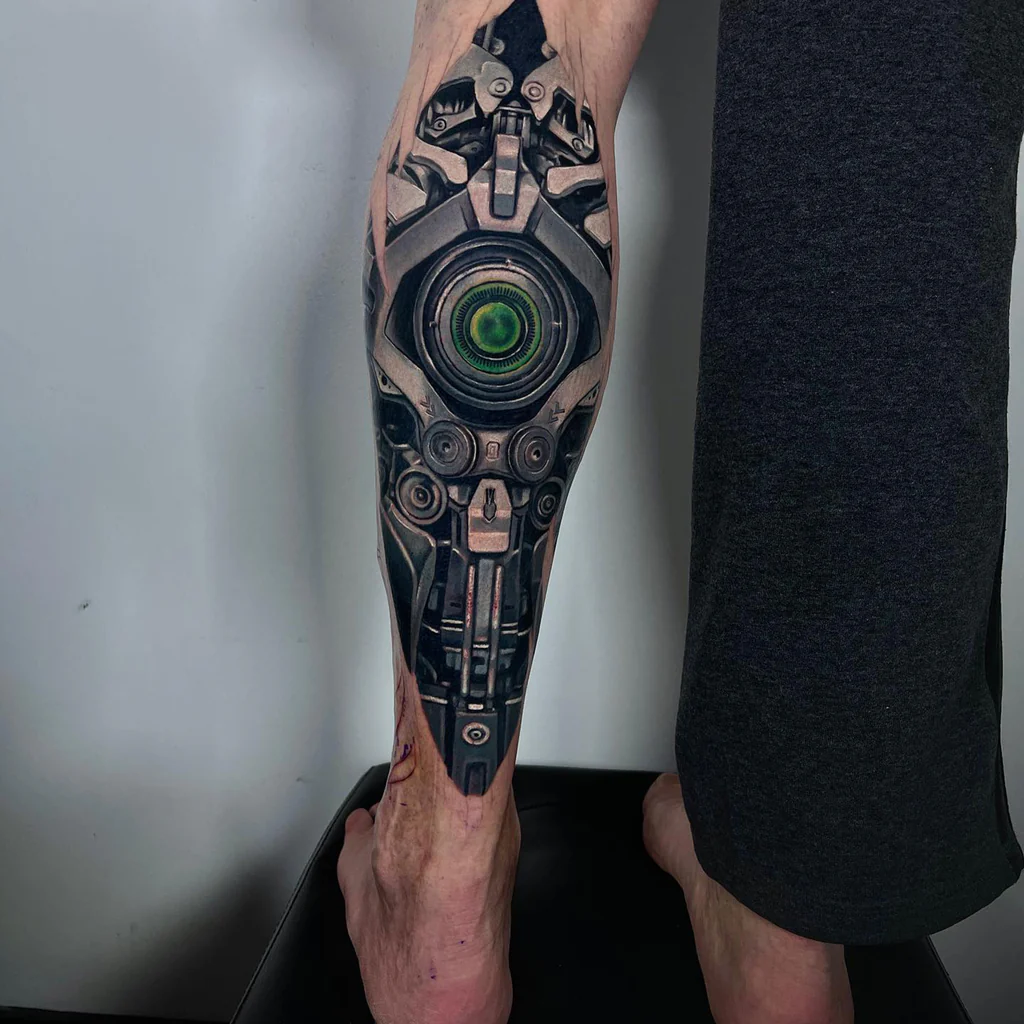
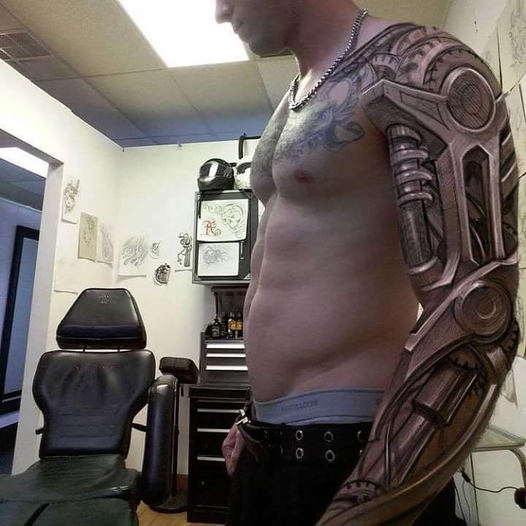
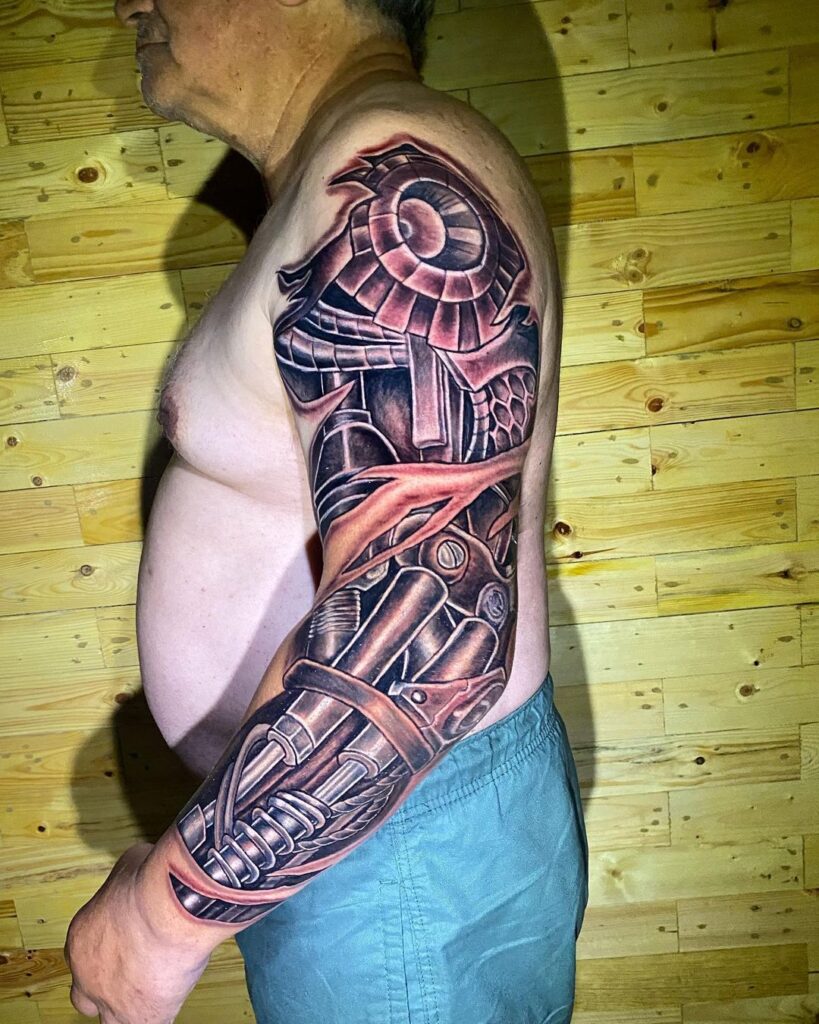
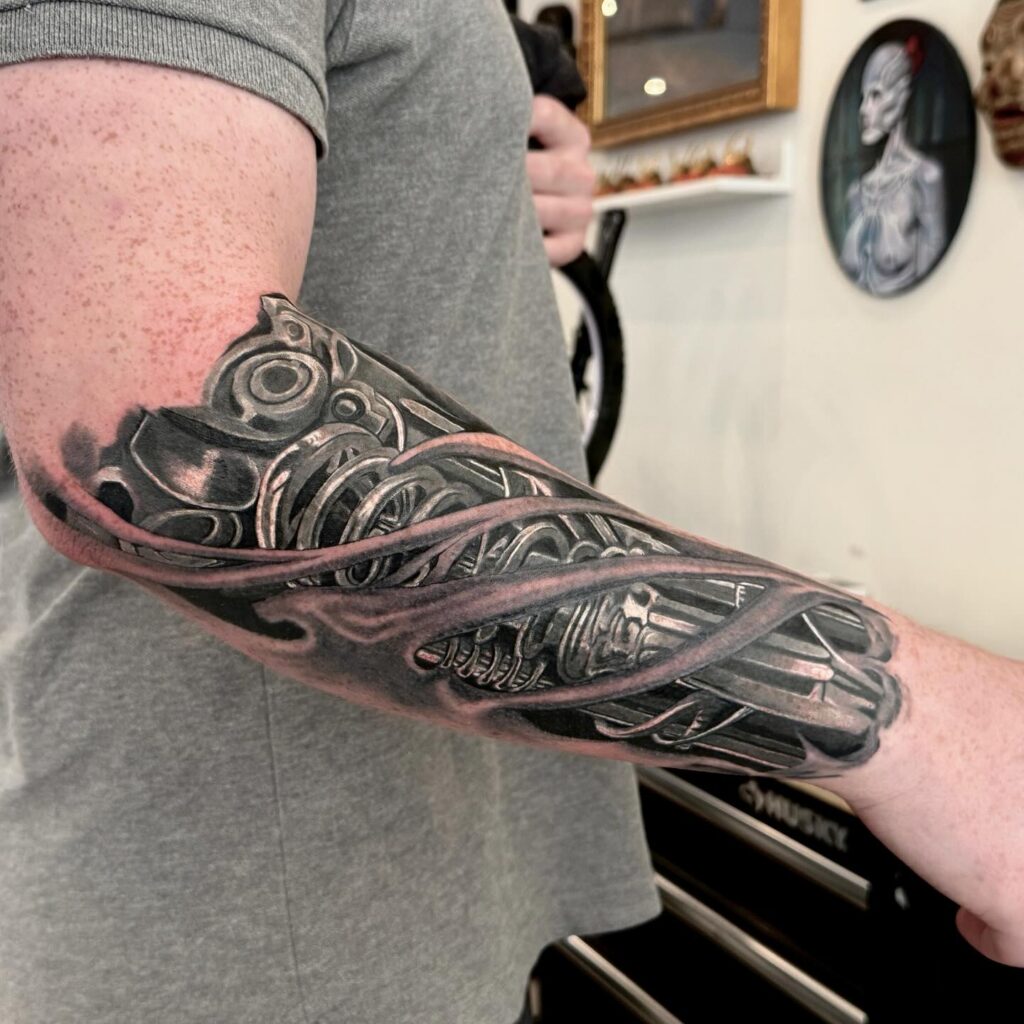
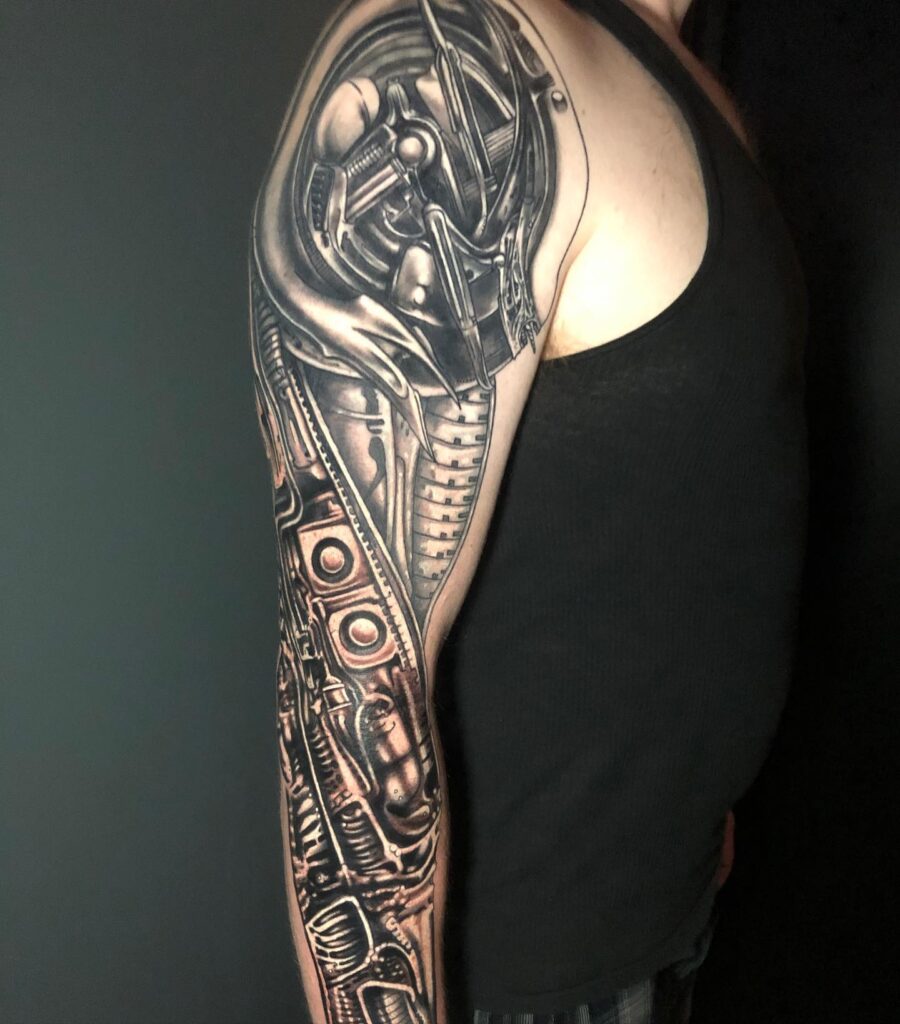
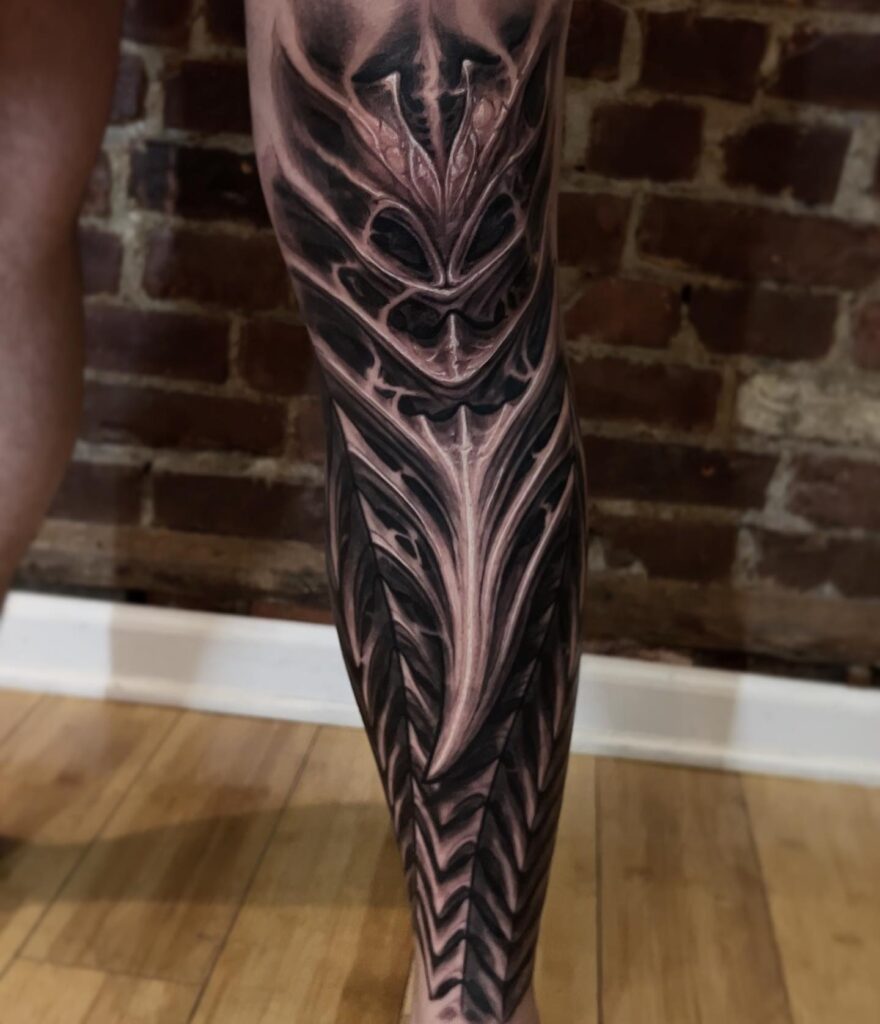

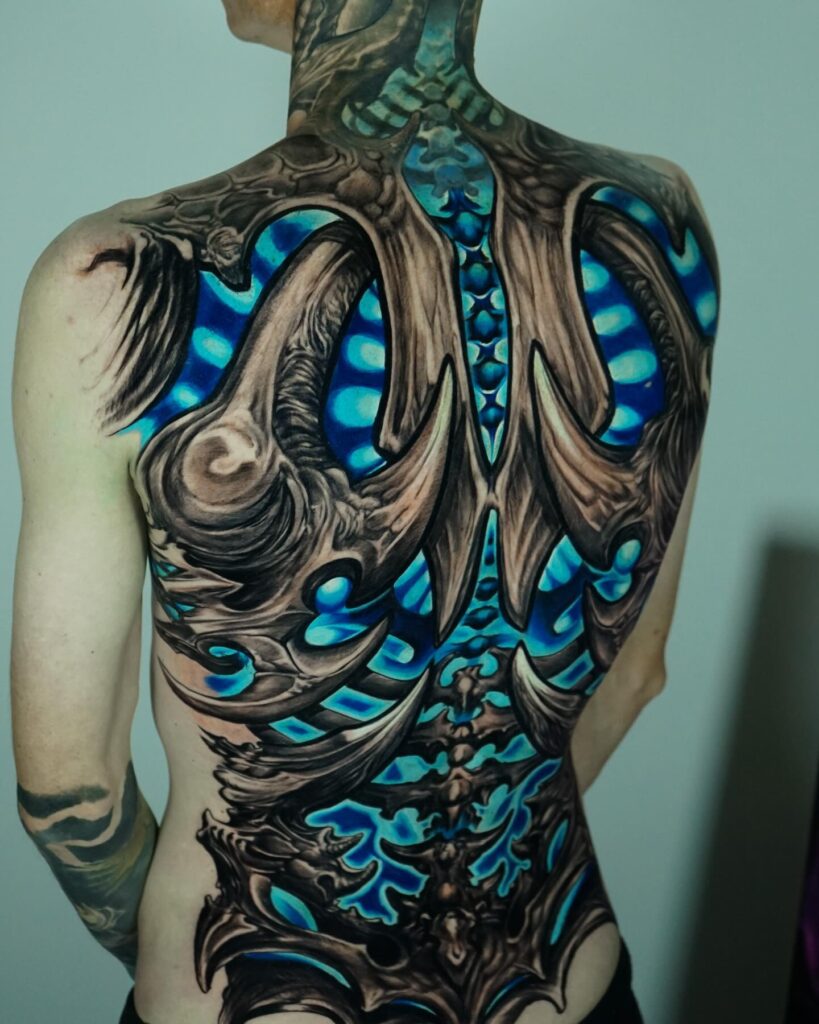
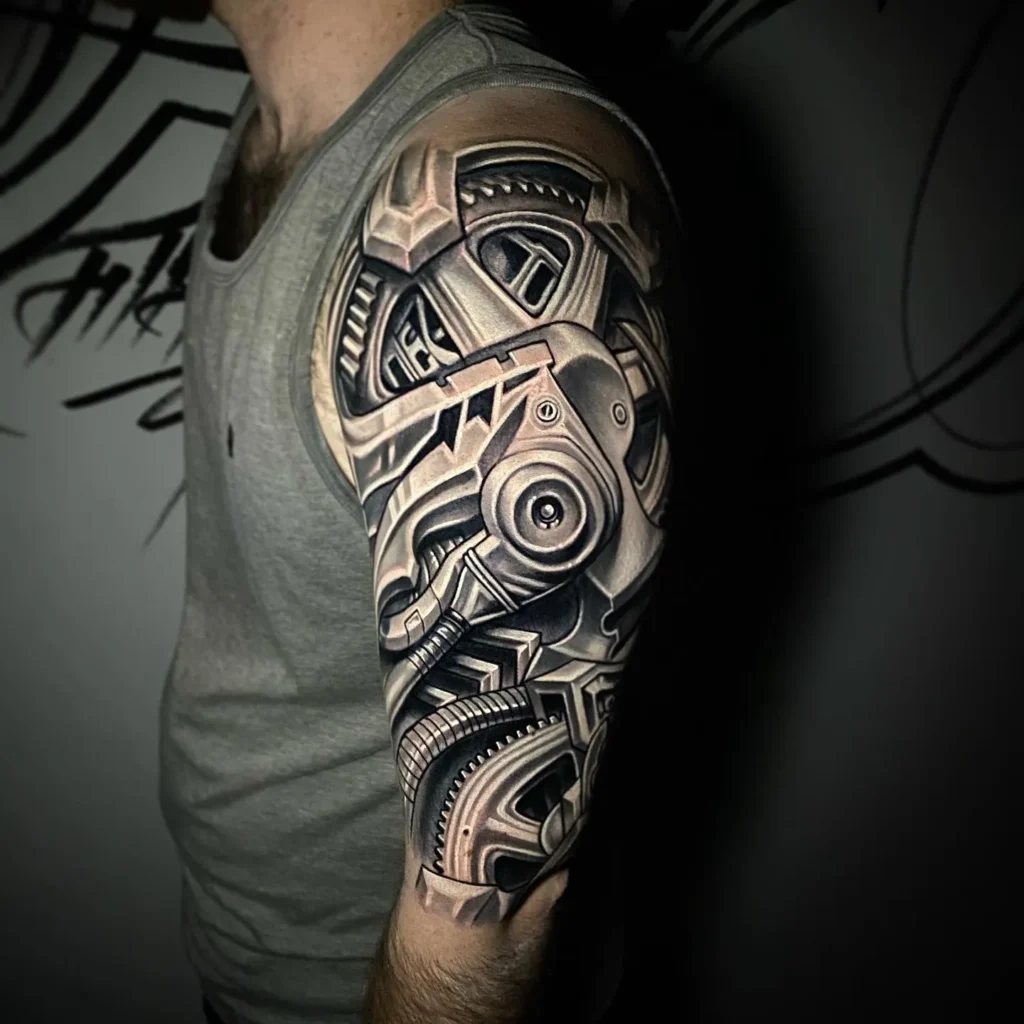
Introduction
Biomechanical tattoos, often referred to as biomech tattoos, are a mesmerizing blend of art and science. They combine elements of machinery with organic anatomy to create stunning, surreal designs. But what exactly are biomechanical tattoos, and why have they gained such immense popularity? Let’s dive in and explore this intriguing tattoo style.
What is a Biomechanical Tattoo?
Biomechanical tattoos are a unique genre of body art that depict the fusion of human anatomy with mechanical parts. Imagine gears, pistons, and circuits intertwined with muscles and bones, creating a visually striking illusion of a cyborg-like transformation.
The Origin and Evolution of Biomechanical Tattoos
The biomechanical tattoo style originated in the late 1970s and early 1980s, heavily influenced by the artwork of H.R. Giger, known for his work on the “Alien” film series. Over the years, this style has evolved, incorporating more intricate designs and diverse influences from both science fiction and real-world mechanics.
Understanding Biomechanical Tattoos
Defining the Style
Biomechanical tattoos are characterized by their hyper-realistic portrayal of mechanical elements integrated seamlessly with human anatomy. This style often uses shading and highlighting techniques to create a three-dimensional effect, making the tattoo appear as though the skin has been peeled back to reveal the machinery beneath.
Key Elements of Biomechanical Tattoos
- Mechanical Components: Gears, pistons, wires, and other mechanical parts.
- Organic Integration: Muscles, tendons, and bones seamlessly blended with mechanical elements.
- Realistic Shading: Detailed shading to enhance the 3D effect and realism.
Popularity and Cultural Impact
Why Biomechanical Tattoos are Trending
The appeal of biomechanical tattoos lies in their futuristic and edgy aesthetic. They are a favorite among tattoo enthusiasts who appreciate the detailed, lifelike quality and the way these tattoos can symbolize the integration of technology with the human body.
Influence on Popular Culture
Biomechanical tattoos have made their mark in popular culture, often seen in movies, video games, and graphic novels. They symbolize a blend of humanity and technology, resonating with themes of cybernetics and the evolution of human identity in the digital age.
Design Inspirations and Ideas
Classic Biomechanical Designs
Traditional biomechanical tattoos often feature classic mechanical parts like gears, cogs, and pistons. These elements are meticulously detailed and integrated with human anatomy to create a lifelike appearance.
Modern Twists on Biomechanical Tattoos
Modern biomechanical tattoos incorporate contemporary technology and futuristic designs. Think of sleek, futuristic machinery, digital circuits, and even elements inspired by cyberpunk aesthetics.
Choosing the Right Tattoo Artist
What to Look for in a Biomechanical Tattoo Artist
Selecting the right artist is crucial for a biomechanical tattoo. Look for artists who specialize in this style and have a portfolio showcasing their expertise in realistic shading and intricate details. Przemek Malachowski is one of the award-winning biomechanical tattoo artists in the world.
Questions to Ask Your Tattoo Artist
- How many biomechanical tattoos have you done?
- Can you show me examples of your previous work?
- What is your process for designing a custom biomechanical tattoo?
Preparing for Your Biomechanical Tattoo
Planning Your Design
Work closely with your artist to design a tattoo that reflects your personal style and vision. Consider the placement and size, as biomechanical tattoos often involve large, detailed designs.
Placement Considerations
Popular placements for biomechanical tattoos include the arms, shoulders, back, and legs. Choose a location that allows for the full expression of the intricate design.
The Tattooing Process
What to Expect During the Session
Getting a biomechanical tattoo can be a lengthy process, often requiring multiple sessions. Be prepared for detailed work that demands patience and precision.
Pain Levels and Managing Discomfort
Biomechanical tattoos can be more painful due to their detailed nature and the extensive shading required. Discuss pain management options with your artist to ensure a comfortable experience.
Aftercare for Biomechanical Tattoos
Immediate Aftercare Tips
- Keep the tattoo clean and dry.
- Apply a thin layer of ointment recommended by your artist.
- Avoid sun exposure and submerging the tattoo in water.
Long-term Care for Lasting Quality
- Moisturize regularly to keep the skin hydrated.
- Use sunscreen to prevent fading.
- Schedule touch-ups as needed to maintain the tattoo’s vibrancy.
Biomechanical Tattoo Ideas for Different Body Parts
Arm and Shoulder Designs
Arm and shoulder tattoos can showcase dynamic, flowing designs that highlight the natural movement of these body parts.
Back and Chest Designs
The back and chest offer a larger canvas for expansive, detailed biomechanical tattoos that can tell a more comprehensive story.
Leg and Calf Designs
Leg and calf tattoos can create the illusion of mechanical joints and muscles, enhancing the natural structure of the legs.
Biomechanical Tattoos in Color vs. Black and Grey
Pros and Cons of Color Biomechanical Tattoos
Pros:
- Vibrant and eye-catching.
- Can highlight specific elements within the design.
Cons:
- More prone to fading.
- Requires more maintenance.
Pros and Cons of Black and Grey Biomechanical Tattoos
Pros:
- Timeless and classic look.
- Less maintenance and touch-ups required.
Cons:
- Less vibrant than color tattoos.
- Can be less visually striking.
Costs Associated with Biomechanical Tattoos
Average Pricing
The cost of a biomechanical tattoo varies widely depending on the size, detail, and artist’s experience. On average, expect to pay between $150 to $300 per hour.
Factors Influencing the Cost
- Size and complexity of the design.
- The artist’s expertise and reputation.
- Geographic location of the tattoo studio.
Potential Risks and How to Mitigate Them
Common Risks
- Infection if proper aftercare is not followed.
- Allergic reactions to tattoo ink.
- Scarring or poor healing.
How to Minimize Risks
- Choose a reputable tattoo artist and studio.
- Follow all aftercare instructions diligently.
- Ensure proper hygiene during the healing process.
Personal Stories and Testimonials
Experiences from Biomechanical Tattoo Enthusiasts
Hearing from others who have biomechanical tattoos can provide valuable insights and inspiration. Many enthusiasts share their stories and tips online, highlighting the significance and personal meaning behind their tattoos.
Maintaining Your Biomechanical Tattoo Over Time
Tips for Keeping Your Tattoo Looking Fresh
- Avoid prolonged sun exposure.
- Keep your skin moisturized.
- Schedule regular touch-ups with your tattoo artist.
Conclusion
Biomechanical tattoos are a captivating blend of art and science, offering a unique way to express the fusion of human and machine. Whether you’re drawn to their futuristic aesthetic or the detailed craftsmanship, these tattoos make a bold statement. By choosing the right artist, planning your design carefully, and following proper aftercare, you can enjoy a biomechanical tattoo that remains vibrant and striking for years to come.
FAQs
What is the significance of biomechanical tattoos? Biomechanical tattoos symbolize the integration of technology with the human body, reflecting themes of cybernetics and the evolution of human identity.
How long does it take to get a biomechanical tattoo? The time required varies based on the size and complexity of the design but can range from several hours to multiple sessions.
Can biomechanical tattoos be removed? Yes, like other tattoos, biomechanical tattoos can be removed through laser tattoo removal, though it may require multiple sessions and can be costly.
Do biomechanical tattoos fade over time? Yes, all tattoos fade over time, but proper aftercare and touch-ups can help maintain their vibrancy.
How to choose the best biomechanical tattoo design? Work with a skilled tattoo artist to create a custom design that reflects your personal style and vision. Consider placement, size, and the elements you want to include in the design.
